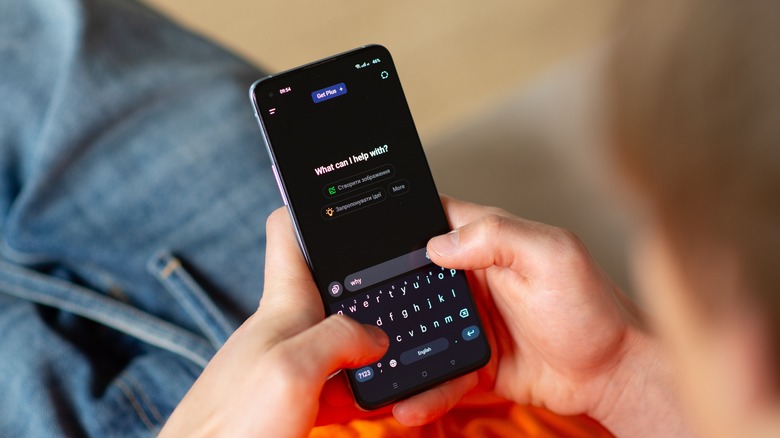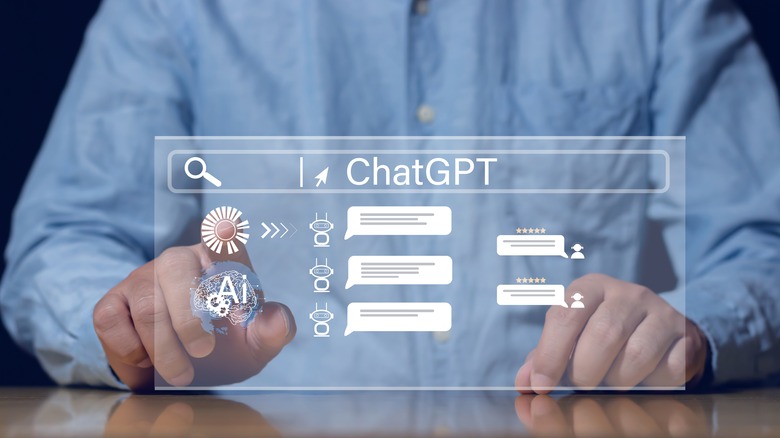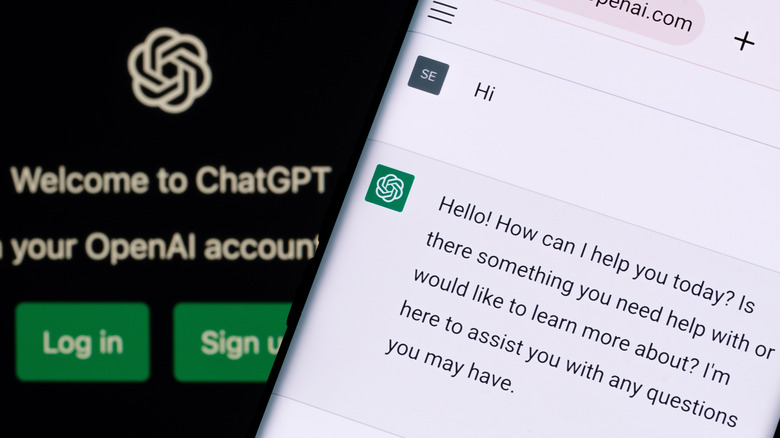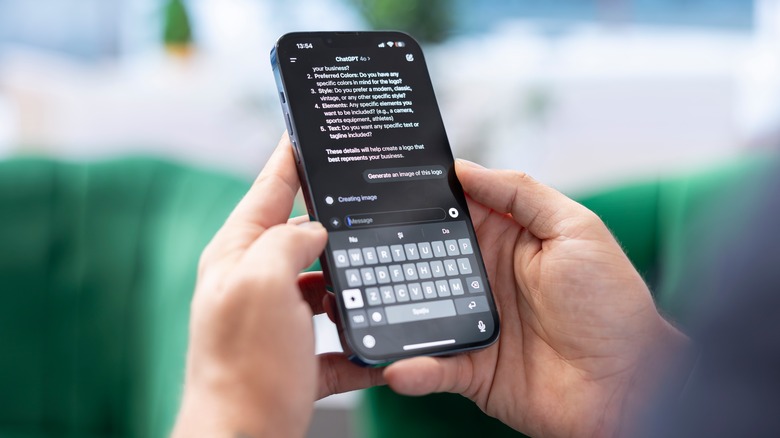Say Goodbye To Bad ChatGPT Answers, These Prompt Tricks Are Easy To Use And Reliable
ChatGPT has been a pretty revolutionary digital tool in recent years that's fast changing how most of us work or go about our daily lives. While it offers several under-the-radar features, most of us use it to get specific information or for drafting text content like emails or social media posts. Despite its obvious strengths, you've probably noticed that it can often give vague, repetitive, or downright unhelpful answers too. If you want to fix that and make it a truly useful technology, we've got some great ChatGPT tips you must try.
It's important to understand that the quality of the answers you get depends quite a lot on how you ask or phrase a prompt. Giving enough background information, specifying requirements or constraints, and asking for refinement can work wonders to eliminate bad ChatGPT answers. In this article, we'll look at exactly how to achieve this through five easy-to-use prompt tricks. They're all simple strategies that can help transform basic AI responses into polished, insightful, and genuinely useful content, no matter what you're using the chatbot for.
Provide Context
One of the main reasons behind bad ChatGPT answers is a lack of context in the prompt. Think of the chatbot as an extremely capable assistant who can write, summarize, or brainstorm anything, but only if you tell it who you are, what you're trying to do, and who the audience is. Without that information, it defaults to generic language and broad explanations that sound polished but lack substance.
Providing context helps ChatGPT understand the purpose, tone, and level of detail you expect. For instance, instead of asking, "Write an email to a prospective client about my social media business," you could say, "I'm trying to onboard a new client to my social media business. It's a fashion brand, so write a short email with some creative ideas I can implement for them and why they should pick me as their social media manager."
The second prompt instantly improves the result because you've given ChatGPT specific background information, such as the target audience and the purpose of the email. It'll pick an appropriate tone and include creative ideas that'll reduce the manual effort you need to put in. This trick is one of many that can help you get the most out of ChatGPT every time you use it.
Use Role-Playing Prompts
A fun prompt trick that can really improve ChatGPT's answers is to instruct it to "act" as someone with the expertise or tone you want. Role-playing prompts help the model narrow its focus and adopt the vocabulary, mindset, and style of a specific character, resulting in answers that feel more authentic, informed, and relevant. For example, instead of asking, "Give me an SEO strategy for my small business," you could say, "You're a seasoned digital marketer. Explain SEO to a small business owner who's new to online marketing. Keep it simple and practical." The second version sets a clear scene: who's speaking, who's listening, and what the purpose is. ChatGPT will now tailor the explanation to that dynamic, avoiding jargon and providing actionable insights very similar to a human expert.
Role-playing works brilliantly across many contexts. For instance, if you're a student, you might write: "Act as a friendly tutor and help me understand how climate change affects ocean currents." Or, if you need some help with self-care, you could say: "Pretend you're a wellness coach and give me a 10-minute self-care routine for better mental health and emotional regulation." Each "act as" or "pretend like" prompt makes ChatGPT answer in a more strategic way, helping you get more accurate, actionable advice.
Ask for credible sources
Don't make the rookie mistake of accepting everything ChatGPT says without question. While AI models can be accurate, they are also known to hallucinate information or go into delusional spirals. They often lie to us, so it's not a good idea to blindly trust what they say, especially if you're doing schoolwork or some kind of research. Fortunately, there's an easy fix: Just ask for credible sources or references whenever you're dealing with factual, academic, or research-based topics. For example, instead of asking for the benefits of meditation, you could say: "List three scientifically proven benefits of meditation and include credible sources or studies to back them up." The difference is striking. The second prompt encourages ChatGPT to ground its response in real evidence, often citing research from journals or institutions. You can go further by requesting specific types of sources. For example, "Provide three peer-reviewed studies published after 2020 that explore the impact of meditation on mental health."
If you're using the information professionally, always double-check the references, as ChatGPT's citations can occasionally be approximate. You can also follow up with, "Include direct links or publication details for verification." In this way, you save the effort of having to manually scour the internet for sources yourself while still ensuring your answers are accurate and verifiable. This is one of the best prompt tricks for students and professionals using ChatGPT for work.
Specify what not to do
We've already talked about telling ChatGPT exactly what you want, but an equally easy-to-use hack is telling it what to avoid. This helps the model steer clear of overused phrases, unnecessary details, or tones that don't fit your purpose. The end result is cleaner, sharper, and more original writing. For example, instead of saying, "Write an Instagram post about solo travel," you could say, "Write an Instagram post about solo travel, but avoid clichés like 'find yourself,' 'wanderlust,' or 'journey of self-discovery.' Make it more practical and personal." By specifying what not to include, you immediately raise the quality of the output. ChatGPT becomes more intentional with word choice and focuses on ideas that feel authentic rather than generic.
This trick also works well for tone and structure. If you're writing a professional email, you could add: "Use a formal tone and keep it to the point." In this way, when you define boundaries, you shape the response you get and avoid bad answers. Instead of spending time editing out unwanted content later, you guide ChatGPT to deliver the right tone and direction from the start, saving you both time and effort.
Refine the results
Even if you're using multiple prompt tricks, getting a great answer from ChatGPT often takes more than one try, and that's perfectly OK. The real magic happens when you refine the output through follow-up prompts. Remember that the first response you get is just a draft, not the final version. You can edit your prompts to give clear, constructive feedback that can shape ChatGPT's tone, structure, and focus until it matches exactly what you need.
For example, if you start with "Give me some ideas for planning the office Christmas party" and get an answer that's too generic or traditional, you can follow up with: "Make the ideas more modern and unique, something that will appeal to the young employees in their twenties." Then, if it still sounds too broad, you might say: "Pick a particular theme, perhaps from a recent movie that's done well."
Each round of refinement teaches ChatGPT more about your expectations, helping it give you exactly what you're looking for. You can use the same trick to refine written content it produces, such as emails or invitations. For instance, you can say "Rewrite this to sound warmer and more empathetic" or "Condense this to 100 words without losing the key message." This process helps you discover new angles or phrasing you hadn't considered and gradually leads to better quality answers from the chatbot.





